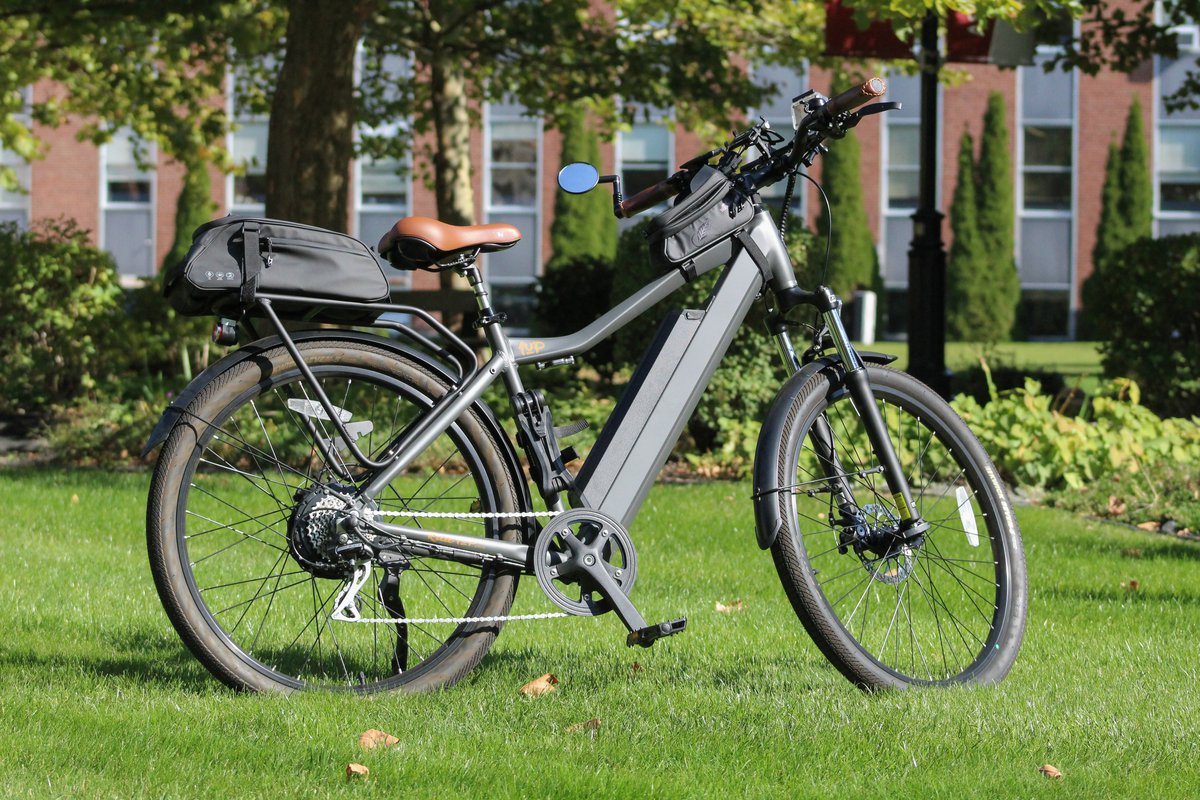A love-hate relationship with electric bikes

Many people can relate to falling off a bike, scraping their knees, crying to a parent or neighbor, and never wanting to ride again. Personally, I’ve cracked my head open twice, but I now work as a bike mechanic and am an avid cyclist and bike enthusiast. Biking is one of those things that can be awkward to learn but once understood, the skill usually sticks. Everytime I get on a bike, I don’t think about what I’m doing, my legs just start moving and suddenly I’m miles into a ride. For most people though, biking is not as accessible. For multiple reasons, not everyone has daily access to this amazing two-wheeled mode of transportation.
Accessibility is a major problem with biking because some people are not mobile enough to ride a bike; however, electric bikes, or e-bikes, provide a helpful alternative. It’s great for older people or people with disabilities who can ride along with their families and friends. With pedal assist, riders who have lung or mobility issues can ride up hills and keep up for a much longer distance. In one study in the US and Canada, 20 percent of older riders use their e-bikes for transportation, riding them to work, and even lessening their carbon footprint. E-bikes are a great option for transportation because they cost thousands of dollars less than cars to buy and maintain, take up less environmental resources than a car, and emit 40-140 times fewer greenhouse gasses than the average 40 mpg car.
I have worked at bike shops for two years, and oftentimes mechanics like myself get annoyed with e-bikes. They tend to be heavier and harder to work on, forcing shops to buy special electric stands that can lift these heavy bikes for employees. These e-bikes usually weigh between 40 to 80 lbs; therefore, mechanics don’t like to lift e-bikes into a regular stand. E-Bikes also run through parts quicker. Since they go faster and use their brakes more, riders tend to need to replace brake pads more often. Although these bikes need different components, the bike industry at large hasn’t met these needs. Furthermore, in shops, I have found that many e-bike riders don’t know enough about e-bikes, specifically that they will run through parts quicker, and thus are annoyed when they realize that owning an e-bikes becomes more expensive than just the first purchase of the bike.
As a cyclist, I love riding on bike paths because I feel safer. As a girl from Boston, riding in a city on a rather small bike can be dangerous. There are many potholes and construction obstacles, aggressive drivers, and confusing intersections that make cycling in Boston difficult and unappealing. Because of this, I love riding on the Southwest Corridor, a four mile bike path that can take me from my neighborhood toward downtown and the Fenway area. Riding on a bike path is comforting; I can focus on my riding rather than the obstacles that come with the streets of the city. This comfort is unfortunately taken away from me when I am riding a casual 10 mph and an e-bike zooms past me at 28 mph. On my bike I can easily see the numerous people in front of me walking their dogs, teaching their kids how to ride their first bike, or taking a morning stroll on the Corridor. However, this is much harder for an e-bike going 28 mph to easily stop for pedestrians who walk on the bike path. Currently, most states don’t have enough regulations on e-bikes, treating them as equals or similarly to regular bikes. I believe this is wrong.
As a casual rider, I usually average 10-15 mph on my rides, but find myself regularly slowing down on the bike path to get out of the way of pedestrians. With e-bikes, people are able to get to 28 mph easier, which is the average for a professional cyclist who wouldn’t train on bike paths meant to be shared with pedestrians. In Boston, e-bikes aren’t allowed to ride on bike paths or sidewalks, but personally, I have never seen this enforced. E-bikes are divided into three classes: class one has pedal assist up to 20 mph, the second has a throttle and assist up to 20 mph, and the third class has pedal assist but no throttle up to 28 mph. In New York and many other states, all three classes are treated as equals to a normal bike with little regulation on class three bikes, even though they can go up to the speed of a car, but on a bike path.
Personally, I think everyone should ride bikes more and I do respect the benefits that e-bikes have for society. They help bring more people who aren’t as mobile to ride more often and are more environmentally friendly than driving a car everyday. However, they run through parts too quickly and many don’t fully understand how to take care of their bikes. In addition, I believe there needs to be more regulations on e-bikes, treating them as separate from both a bicycle and a motorbike, and that especially a class three e-bike should not be able to ride up to their maximum 28 mph on a bike path.

 Editorial Notebook
Editorial Notebook
 Editorial Notebook
Editorial Notebook
 Opinion
Opinion
 GM Week 2024
GM Week 2024